
views
X
Research source
Bumblefoot is graded by its severity with the most severe being grade 5. Fortunately, you can typically treat bumblefoot easily at home, though you may need antibiotics from a vet for grades 4-5. You’ll just need a few basic materials and some patience with your chicken. If the infection is severe, a visit to the vet should help clear things up.
Treating the Infected Area
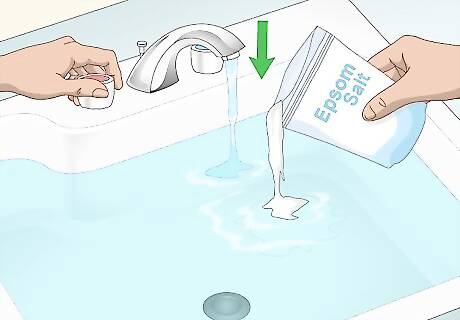
Fill the sink with warm water and Epsom salt. Bring your infected chicken into your house where it is nice and warm. Fill the sink about halfway with water that is a little warmer than room temperature and add in a few spoonfuls of Epsom salt. The Epsom salt will help ease inflammation. If you need to remove a scab, that will be easier after soaking the foot. You can use any sink to bathe your chicken’s foot, but the bathroom might be a good choice. That way you can close the door and help your chicken feel more secure. You can also use some soap to clean the foot while it soaks, but that is not necessary.

Wrap your chicken in a towel and soak its feet in the bath. Secure your chicken in a clean bath towel to keep it from flapping its wings or scratching you. If your chicken is pretty tame, you can just wrap the towel loosely around it. Soak the infected foot in the sink for 10 minutes. Wrapping your chicken will help it feel safe so it’s more comfortable soaking its feet. If you have a more excitable chicken, ask a friend to help you hold it during this process. Try talking in a soothing voice to the chicken if it seems agitated.
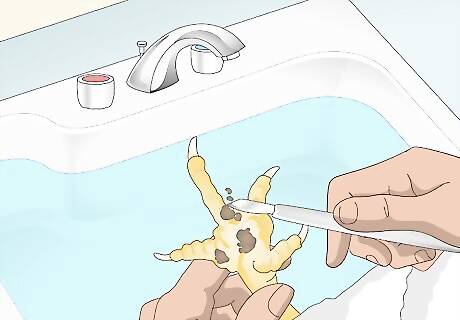
Cut out the scab with a scalpel, if necessary. A brownish-black scab indicates that the infection is advanced. If that’s the case, you’ll need to perform minor surgery. After soaking, the scab should have softened considerably. Use the scalpel to gently scrape the scab away from the chicken’s foot. If you don’t have a scalpel, or simply don’t feel comfortable with one, you can use a gloved hand to try to gently remove the black area. Gently wiggle the scab loose and pry it away. If it doesn’t come off easily, try soaking the foot for 10 more minutes to loosen it more. You don't need to remove anything other than the scab itself. There's no need to dig deep into the foot or to try to remove the skin around the scab. If you catch bumblefoot early enough, there will simply be a red, inflamed area rather than a scab. If that is the case, you can skip this step.
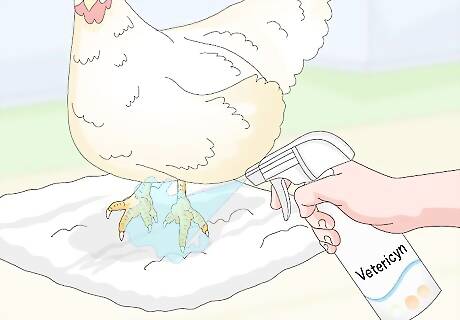
Dry the foot and spray with Vetericyn. After the soak and scab removal, pat the foot dry with a clean towel. Vetericyn is a wound and skincare product for animals. You can purchase it online, or at a pet supply shop. Follow the directions on the bottle and spray it on the clean, dry foot. Alternatively, you can cover the wound in honey, which acts as a natural antibacterial, antiseptic, and antifungal. You'll wrap the foot after applying honey, so no need to worry about it making a mess.
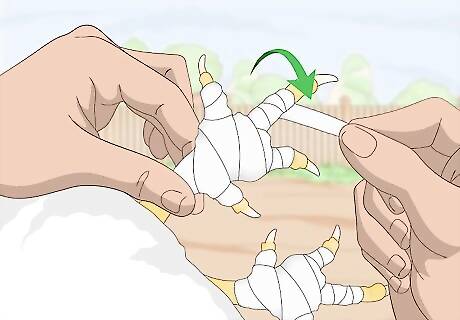
Wrap the foot with gauze or vet wrap. To make sure the wound has a chance to heal, keep it covered for several days. You can use either gauze or vet wrap. Wind either material around the wounded foot and fasten it with medical tape. It should be snug and secure, but not so tight that it is painful for the chicken.
Caring for your Healing Chicken

Keep the chicken separate from other chickens for a few days. Your chicken needs some rest while healing, so place it in a temporary home. This could be a crate or box that you set up in a quiet corner of your home. Spread some hay or other nesting material on the bottom of the box. Don’t put a roosting perch in the temporary home. It’s best if the chicken doesn’t jump up and down for several days.
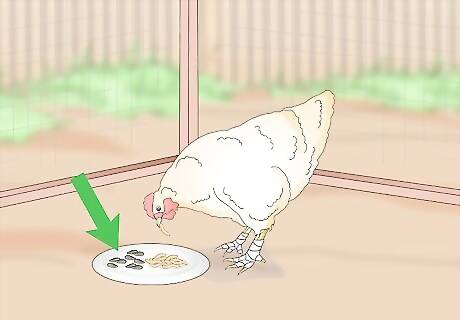
Add extra protein to its diet to promote healing. You can feed your chicken its normal diet, but give it an extra boost of protein. During the healing process, offer the chicken high-protein treats like mealworms and sunflower seeds. You can also add electrolytes and vitamins to your chicken’s water to speed healing. This will help prevent bumblefoot from returning. Ask your vet if they can recommend a good product.
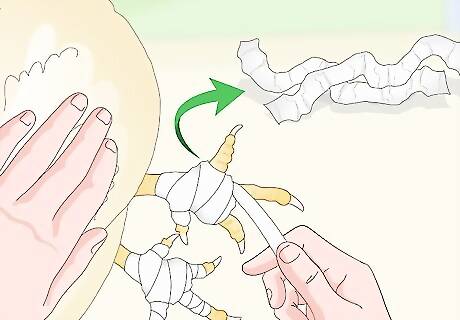
Change the bandage every couple of days. It might take a couple of weeks for your chicken to start walking normally. During this time, change the bandage anytime it gets dirty or becomes ragged. You might need to do this every couple of days. Other times, the bandages might last for a week.
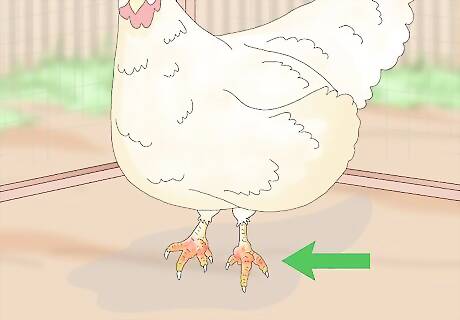
Monitor the chicken for signs of infection. Keep a close eye on your chicken while you are treating bumblefoot. Signs of a worsening infection include redness and warmth around the wound. If you notice these symptoms or foul-smelling drainage, contact your vet. If you have any concerns, it’s a good idea to take your chicken to the vet. They can prescribe oral antibiotics that can help clear up the infection.
Preventing Bumblefoot
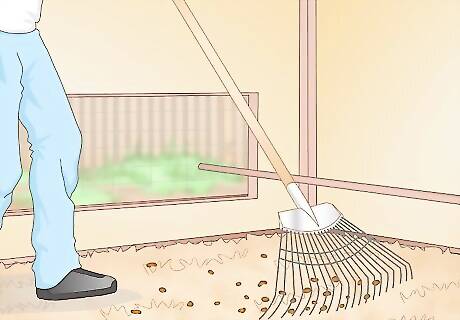
Clean the coop and bedding daily to prevent bacteria. A clean environment is key to helping your chicken avoid infections like bumblefoot. Take time each day to wipe up any messes in the coop and to remove any soiled bedding. Add fresh bedding to replace what you removed. Do a deep-clean of your coop as needed. This might be every few weeks or every few months, depending on how many chickens you have.
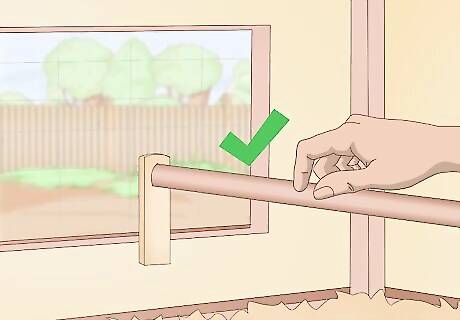
Check perches to make sure they are smooth. Splinters and other jagged pieces of wood can wound your chicken, which can lead to infections like bumblefoot. Check your perches frequently to ensure that they won’t hurt your chicken's feet. Run your hands along them to make sure they feel smooth. If necessary, use sandpaper to smooth out any rough spots. Get in the habit of checking the perches when you do your daily feeding and cleaning.
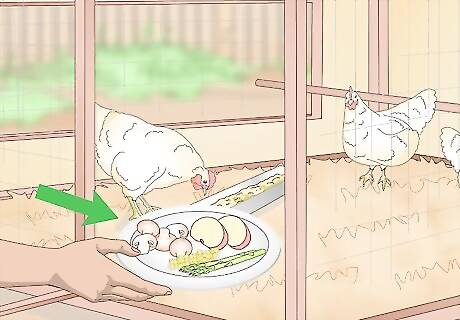
Feed chickens a healthy diet to help fight infections. Being in good health can help your chicken fend off infections. Feed them layer pellets daily, which will provide them with essential nutrients. You can supplement pellets with corn or wheat, to add some variety. You can slice up fresh fruits and veggies as daily treats for your chickens. Just stay away from citrus fruits, as those aren’t good for chickens.
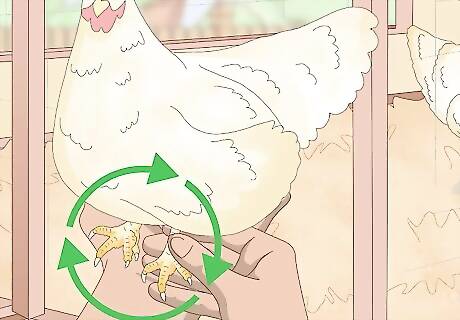
Inspect your chicken’s feet regularly. Make a habit of looking at your chicken’s feet every couple of days. If you notice any signs of infection, such as swelling or redness, you can treat them for bumblefoot. These regular inspections will help you catch any problems before they become severe.




















Comments
0 comment